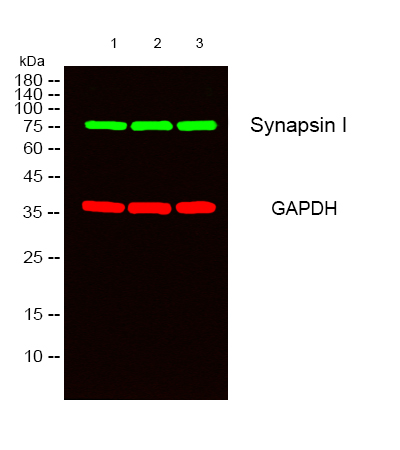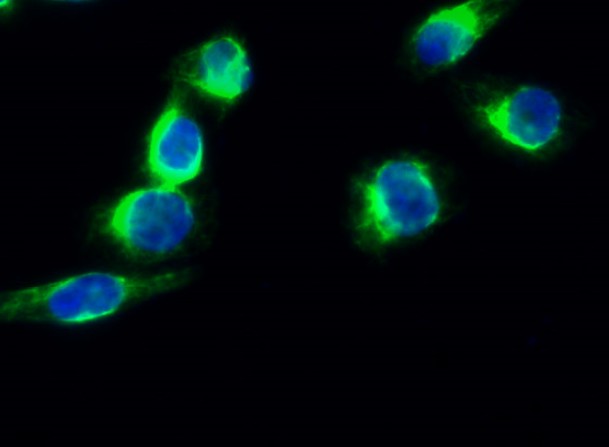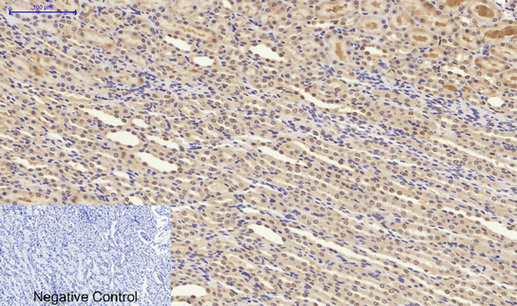


| WB | 咨询技术 | Human,Mouse,Rat |
| IF | 咨询技术 | Human,Mouse,Rat |
| IHC | 1/50-1/100 | Human,Mouse,Rat |
| ICC | 1/50-1/200 | Human,Mouse,Rat |
| FCM | 咨询技术 | Human,Mouse,Rat |
| Elisa | 1/10000 | Human,Mouse,Rat |
| Aliases | SYN1; Synapsin-1; Brain protein 4.1; Synapsin I |
| Entrez GeneID | 6853 |
| WB Predicted band size | Calculated MW: 74 kDa; Observed MW: 74 kDa |
| Host/Isotype | Rabbit IgG |
| Antibody Type | Primary antibody |
| Storage | Store at 4°C short term. Aliquot and store at -20°C long term. Avoid freeze/thaw cycles. |
| Species Reactivity | Human,Mouse,Rat |
| Immunogen | The antiserum was produced against synthesized peptide derived from human Synapsin. AA range:3-52 |
| Formulation | Purified antibody in PBS with 0.05% sodium azide,0.5%BSA and 50% glycerol. |
+ +
以下是3篇与 **Synapsin 1抗体** 相关的文献摘要信息:
---
1. **文献名称**:*Synapsin I: a major synaptic phosphoprotein regulating neurotransmitter release*
**作者**:P. Greengard 等
**摘要**:该研究阐明了Synapsin 1在突触囊泡调控中的作用,表明其通过磷酸化调节神经递质释放。文中使用特异性抗体验证了Synapsin 1在神经元中的定位及其与囊泡的相互作用。
---
2. **文献名称**:*Differential expression of synapsin I and II in rodent and primate brains*
**作者**:H. H. Bähler 等
**摘要**:通过免疫组织化学和Western blot技术,利用Synapsin 1抗体比较了啮齿类与灵长类动物脑中Synapsin的分布差异,揭示其在不同物种中的表达特异性及功能保守性。
---
3. **文献名称**:*Synapsin 1 depletion reduces resilience to epileptic seizures*
**作者**:M. Ketzef 等
**摘要**:研究通过敲除小鼠模型结合Synapsin 1抗体检测,发现Synapsin 1缺失会降低突触囊泡储备,增加癫痫易感性,提示其在维持突触稳态中的关键作用。
---
4. **文献名称**:*Validation of commercial antibodies for selective protein labeling in synaptic studies*
**作者**:L. M. O’Connor 等
**摘要**:系统评估了多种Synapsin 1抗体的特异性(包括Sigma、Abcam等品牌),通过免疫荧光和质谱分析确认其在不同实验条件(如固定、冷冻切片)下的可靠性。
---
以上文献覆盖了Synapsin 1的分子机制、物种差异、病理关联及抗体验证等方面,适用于神经科学实验设计与方法参考。
×